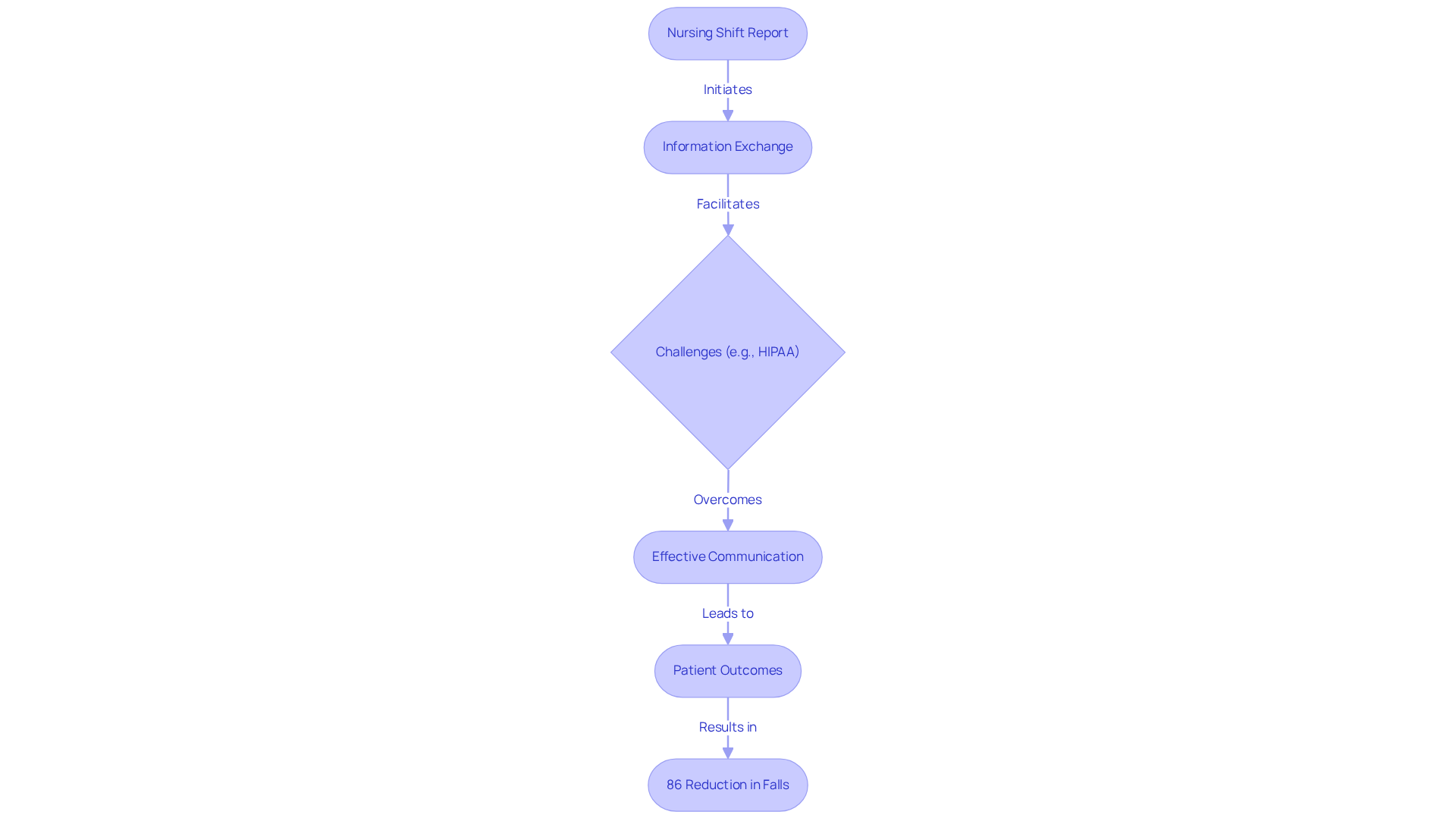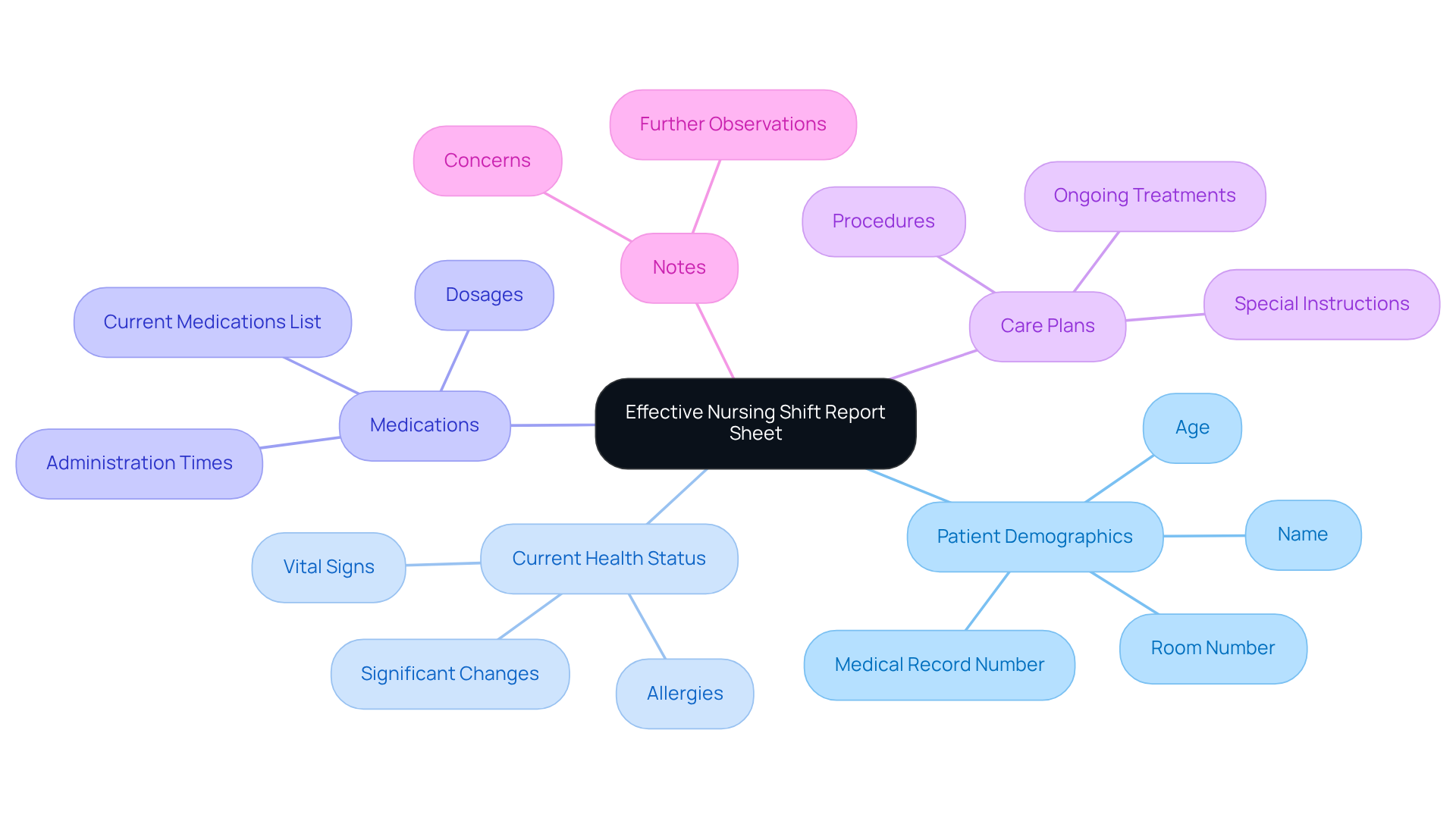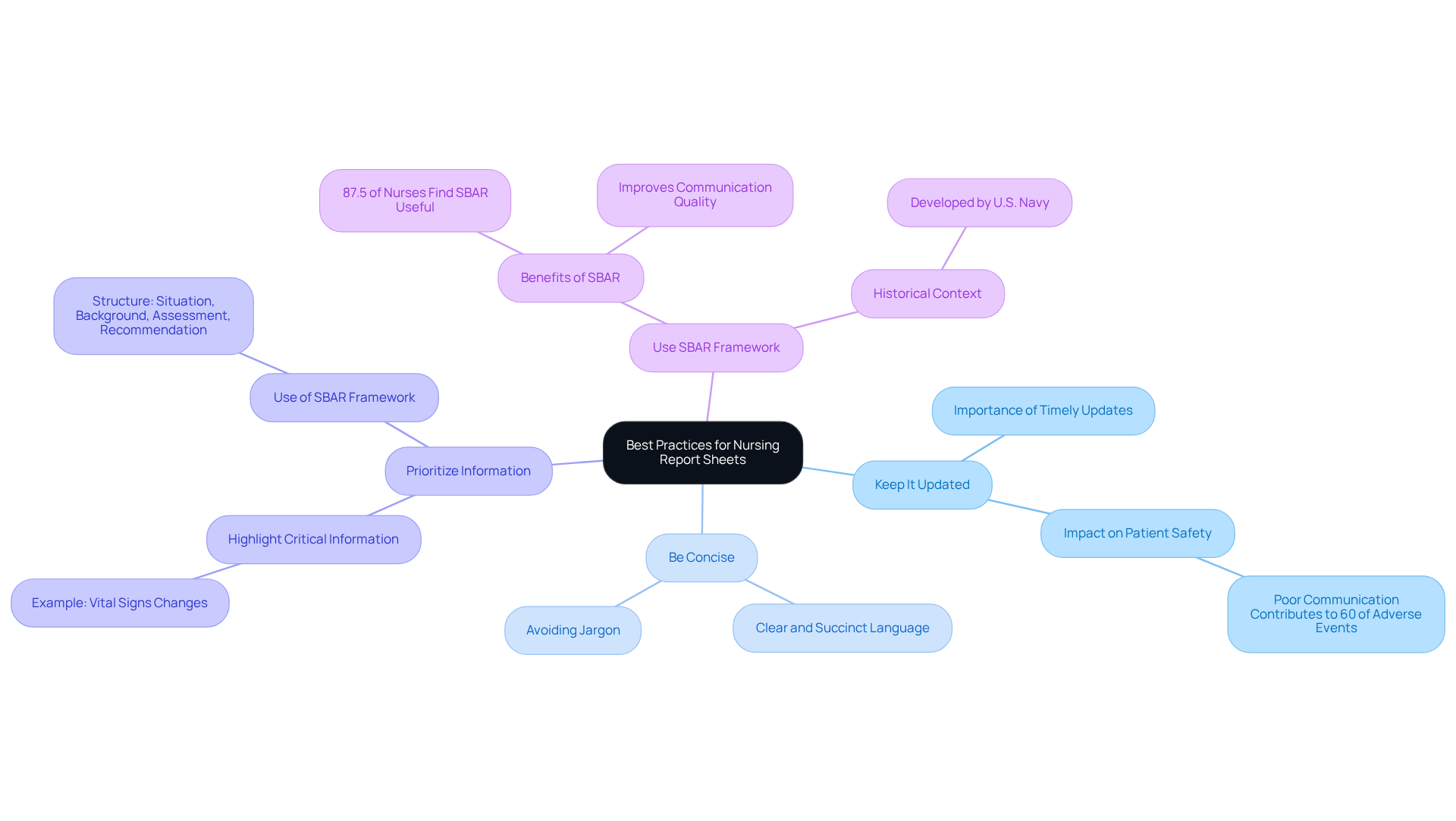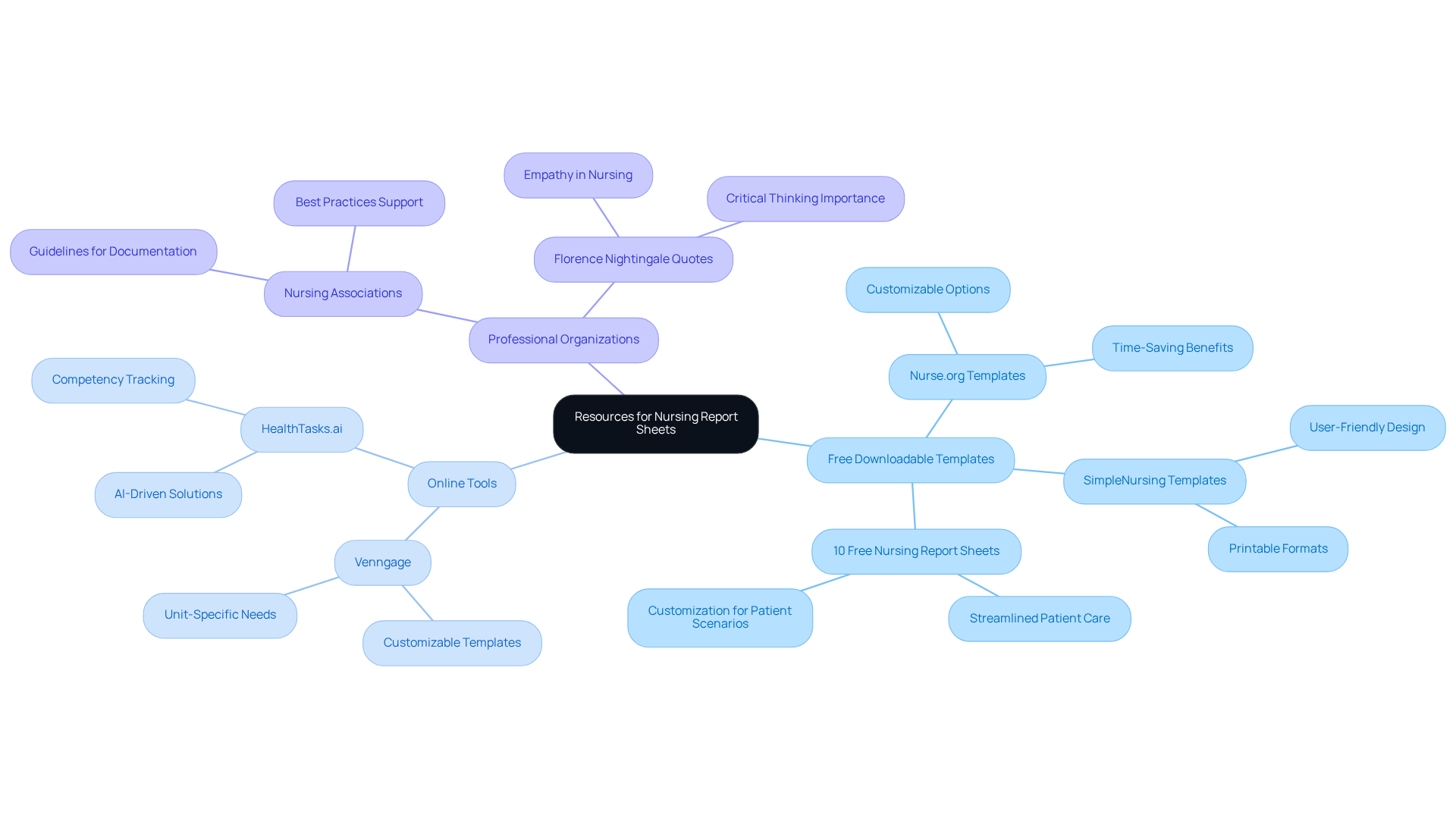Overview
In the demanding world of healthcare, one of the greatest challenges is ensuring effective communication during shift handovers. This article focuses on how to utilize nursing shift report sheets to enhance patient care. By organizing these report sheets thoughtfully, we can improve communication, which is vital for ensuring the best outcomes for our patients. Research has shown that structured reporting practices lead to significant reductions in fall rates and smoother care transitions.
Imagine the difference it makes when healthcare providers can easily share critical information. It not only alleviates some of the administrative burdens but also fosters a collaborative environment that prioritizes patient safety. When we implement these practices, we are not just following protocols; we are nurturing a culture of care that truly benefits our patients.
As we reflect on our experiences, let’s consider how we can adopt these structured reporting practices in our daily routines. By doing so, we can create a more supportive atmosphere for both staff and patients. Together, we can enhance the quality of care we provide, ensuring that every patient receives the attention and support they deserve. Let’s take action to improve our reporting processes and, in turn, our patient outcomes.
Introduction
In the often chaotic world of healthcare, the nursing shift report sheet stands as a crucial lifeline. It enables seamless communication between shifts, ensuring that vital patient information is accurately conveyed. By mastering this essential tool, nurses can significantly enhance patient safety and care continuity. This is particularly important as they navigate the challenges posed by fragmented healthcare systems.
Yet, amidst regulatory hurdles and the complexities of patient care, how can healthcare professionals ensure that every critical detail is communicated effectively during handovers? This article explores the key components, best practices, and resources necessary to elevate nursing shift reports. Together, we can transform patient outcomes and foster a culture of safety in our healthcare settings.
Understand the Purpose of Nursing Shift Report Sheets
is a vital tool that facilitates the compassionate exchange of critical information between nursing shifts, addressing the challenges posed by fragmented healthcare systems. These reports provide incoming nurses with immediate access to essential details, which is crucial for ensuring continuity of care and enhancing patient safety. However, regulatory concerns, such as HIPAA, often create significant barriers to communication between individuals and their providers, complicating the transfer of vital information.
Have you ever wondered how effective communication during handovers can impact patient outcomes? Research indicates that it can significantly reduce falls, with studies revealing a staggering decrease of up to 86% in fall rates after implementing structured reporting practices. Additionally, a case study on bedside shift documentation (BSR) demonstrated a 24% reduction in falls among patients, underscoring the positive impact of clear communication in navigating the often disjointed coordination seen in healthcare.
By summarizing essential patient information, these documents empower caregivers to manage their time effectively, allowing them to concentrate on delivering exceptional care. On average, each person-centered handover (PCH) takes about 6 minutes, proving that effective communication can be achieved without consuming excessive time. A well-organized shift summary can be completed in just 5-10 minutes, ensuring that nurses can swiftly convey important information without compromising the quality of care.
Understanding the purpose and efficient use of the nursing shift report sheet is crucial for improving clinical outcomes and fostering a culture of safety within healthcare settings. Together, we can revolutionize healthcare provision by prioritizing effective communication and supporting one another in this essential endeavor.

Identify Key Components of an Effective Report Sheet
An effective nursing shift report sheet is essential for ensuring smooth care transitions, particularly in our frequently fragmented healthcare systems. Have you ever felt overwhelmed during shift changes? It’s crucial to have a clear and organized nursing shift report sheet to alleviate this burden. Key components to include are:
- Patient Demographics: Essential details such as name, age, room number, and medical record number facilitate quick identification and tracking of patients.
- Current Health Status: Documenting vital signs, allergies, and any significant changes in condition is crucial for ongoing assessment and intervention.
- Medications: A comprehensive list of current medications, including dosages and administration times, helps prevent errors and ensures adherence to treatment plans.
- Care Plans: Outline ongoing treatments, procedures, and any special instructions to guide nursing actions and improve health outcomes.
- Notes: Allowing room for further observations or concerns facilitates the inclusion of essential information that may affect care.
Incorporating these elements into the nursing shift report sheet not only supports effective handoffs but also promotes continuity of care. This ultimately for individuals, which is our primary goal. Given the challenges posed by fragmented healthcare systems and regulatory concerns like HIPAA, effective communication is paramount. Are we doing enough to ensure that all pertinent information is communicated during shift changes? This is essential to minimizing miscommunication and enhancing outcomes.

Apply Best Practices for Using Nursing Report Sheets
To maximize the effectiveness of nursing report sheets, it’s essential to embrace best practices that resonate with the challenges you face in providing care:
- Keep It Updated: Regularly update the report sheet throughout your shift to reflect any changes in patient status. This practice is crucial, as the Joint Commission reported that poor communication contributes to over 60% of all hospital adverse events. Accurate and timely information sharing is vital for the safety and well-being of your patients.
- Be Concise: Use clear and succinct language to convey information. Avoid unnecessary jargon that may confuse new staff members. Efficient communication directly impacts patient safety and the quality of care you provide.
- Prioritize Information: Highlight critical information that requires immediate attention, such as changes in vital signs or new orders. For example, consider a caregiver reporting an individual’s pulse at 120 and blood pressure at 128 over 54. This situation necessitates prompt physician intervention. The SBAR framework—Situation, Background, Assessment, Recommendation—can guide you in structuring this communication effectively.
Using a nursing shift report sheet with a standard format like SBAR can enhance clarity and consistency in reporting. Research shows that 87.5% of healthcare professionals in assisted living environments found SBAR beneficial for structuring and conveying information, significantly improving care outcomes. Furthermore, studies indicate that using standardized communication formats like SBAR during transitions between doctors and healthcare staff enhances safety-related outcomes.
By adhering to these methods, you can ensure that your documentation serves as an effective instrument for communication and care. This commitment ultimately improves the standard of service delivered, fostering a nurturing environment for both patients and healthcare providers alike.

Access Templates and Resources for Report Sheet Creation
Nurses often face emotional challenges in their demanding roles, and numerous resources are available to assist them in creating effective nursing report sheets. These tools not only enhance efficiency but also improve the quality of patient care:
- Free Downloadable Templates: Websites such as Nurse.org and SimpleNursing offer a variety of free templates that can be customized to meet individual needs. This allows nurses to tailor their reporting tools to specific patient populations, helping them reclaim several hours each day that were previously consumed by routine administrative tasks.
- Online Tools: Platforms like Venngage provide customizable templates, enabling healthcare professionals to create documents that cater to the specific needs of their units or client demographics.
- Professional Organizations: offer guidelines and resources for effective documentation creation. These resources ensure that healthcare providers adhere to best practices and maintain high standards in record-keeping. As Florence Nightingale once said, "Nursing is an art: requiring knowledge and critical thinking, but also empathy and a genuine desire to help others."
By utilizing these resources, including insights from the case study titled '10 Free Nursing Report Sheets,' nurses can streamline their reporting processes. This improvement not only enhances communication during shift changes but ultimately elevates the quality of care provided. Using nursing report sheets aids in organization and significantly boosts patient safety and outcomes.
Are you ready to embrace these tools and transform your reporting process? Your dedication to patient care deserves the support of effective resources.

Conclusion
Mastering the nursing shift report sheet is vital for improving patient care and ensuring smooth transitions between nursing shifts. Have you ever felt overwhelmed by the complexities of communication during handovers? By effectively utilizing this essential tool, healthcare professionals can enhance communication, reduce errors, and cultivate a culture of safety. The significance of structured reporting is profound, as it directly influences patient outcomes and promotes a more organized approach to care.
Consider the key components of an effective nursing shift report sheet:
- Patient demographics
- Current health status
- Medications
- Care plans
- Space for additional notes
These elements not only streamline information sharing but also empower nurses to prioritize patient needs and respond promptly to changes in condition. Embracing best practices, such as keeping the report sheet updated and using concise language, further enhances communication, ensuring that vital information is conveyed clearly and efficiently.
The commitment to utilizing resources like templates and online tools can transform the nursing reporting process, ultimately elevating the quality of care provided to patients. As the healthcare landscape evolves, prioritizing effective communication through nursing shift report sheets will play a pivotal role in advancing patient safety and satisfaction. Embracing these practices is not just a choice; it is a responsibility that every healthcare professional should undertake to ensure the best possible outcomes for those in their care. How can you integrate these strategies into your daily practice to foster a supportive environment for your patients?




